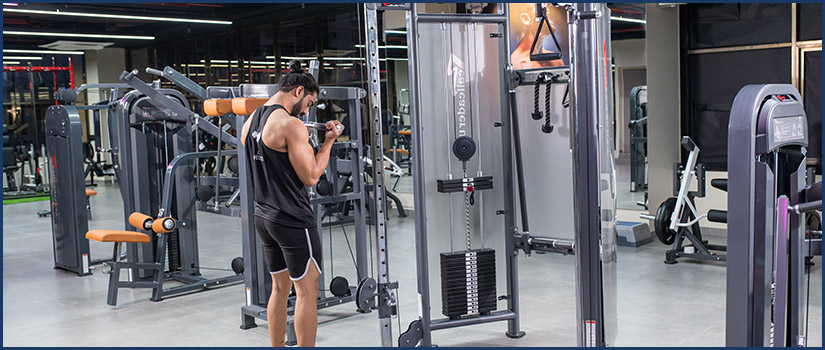The Science Behind Weightlifting Equipment Design
Weightlifting has been a cornerstone of physical fitness for centuries. As our understanding of biomechanics, physiology, and engineering has evolved, so too has the design of weightlifting equipment. Modern weightlifting tools are more advanced, efficient, and safer than ever before, thanks to the scientific principles that underlie their design. From barbells and dumbbells to machines and racks, weightlifting equipment is the result of rigorous research and innovation, aimed at maximizing performance while minimizing the risk of injury.
This article will explore the science behind weightlifting equipment design, delving into how biomechanics, materials science, and ergonomics are used to create tools that enhance strength training while ensuring safety and comfort.

Biomechanics and Weightlifting Equipment
One of the most crucial aspects of weightlifting equipment design is biomechanics, the study of how the body moves and the forces involved in those movements. Every piece of weightlifting equipment is designed to interact with the human body in a way that optimizes movement, minimizes strain, and reduces injury risks.
Understanding Human Movement
When designing weightlifting equipment, engineers must consider how the body moves under load. Weightlifting involves various compound movements, such as squats, deadlifts, and presses, which require coordination between multiple muscle groups and joints. Properly designed equipment must accommodate these complex movements without forcing the body into unnatural positions that could lead to injury.
For example:
- Barbell design: Barbells are designed with specific diameters, knurling patterns (grip texture), and lengths to ensure optimal handling. The bar’s diameter is important for grip strength, while the length and flexibility (or “whip”) of the bar affect balance and power distribution during lifts like the clean and jerk.
- Weight machines: Unlike free weights, weight machines often guide the user through a fixed range of motion. Designers carefully consider the movement paths and biomechanics of each joint involved to ensure that the machine supports natural body movement and doesn’t place undue stress on vulnerable areas like the lower back or knees.
Range of Motion and Joint Health
In addition to facilitating efficient movement, weightlifting equipment is designed to allow for a full range of motion (ROM) in exercises. A restricted ROM can lead to muscle imbalances and increase the likelihood of injury. Therefore, equipment such as power racks, adjustable benches, and cable machines are built to allow users to perform exercises through their full ROM, enabling more effective muscle engagement.
Cable machines:
- These allow for exercises to be performed in multiple planes of motion, offering greater flexibility and range of motion compared to free weights. This design allows for smoother transitions and more natural movement patterns, which is particularly beneficial for rehabilitation or functional strength training.
Materials Science: Durability, Weight Distribution, and Safety
The materials used in the design of weightlifting equipment have a significant impact on both its performance and safety. High-quality materials are essential for ensuring that the equipment can withstand the stress of repeated use and heavy loads, while also being durable and safe.
Strength and Durability
Weightlifting equipment, especially barbells, dumbbells, and weight plates, must be constructed from materials that can withstand enormous forces without breaking or bending. High-strength steel is often used in barbells and racks due to its ability to handle extreme loads while maintaining its shape and function.
- Tensile strength: A key factor in barbell design is tensile strength, which measures how much force a material can withstand before breaking. Modern barbells are made from high-tensile-strength steel, ensuring they can handle hundreds of pounds without bending or snapping.
- Coatings and finishes: To prevent rust and increase the longevity of the equipment, barbells and weight plates are often coated with materials like chrome, zinc, or cerakote (a ceramic-based coating). These coatings not only protect the metal from corrosion but also provide a smoother, more comfortable grip.
Weight Distribution
The distribution of weight in weightlifting equipment plays a critical role in how the body interacts with it. Even small differences in weight distribution can significantly affect the performance and safety of exercises.
Barbell balance: The design of barbells involves careful consideration of weight distribution across the bar. Olympic barbells, for example, are designed with rotating sleeves that allow the weight plates to rotate independently of the bar. This minimizes torque on the lifter’s wrists and shoulders during exercises like the clean and jerk, where the bar must rotate quickly.
Weight plate design: Modern weight plates are designed to be thinner than older models, allowing more plates to be loaded onto the barbell for maximum resistance. Additionally, bumper plates, made of dense rubber, are used in Olympic lifting to protect both the equipment and the floor when the barbell is dropped from overhead.
